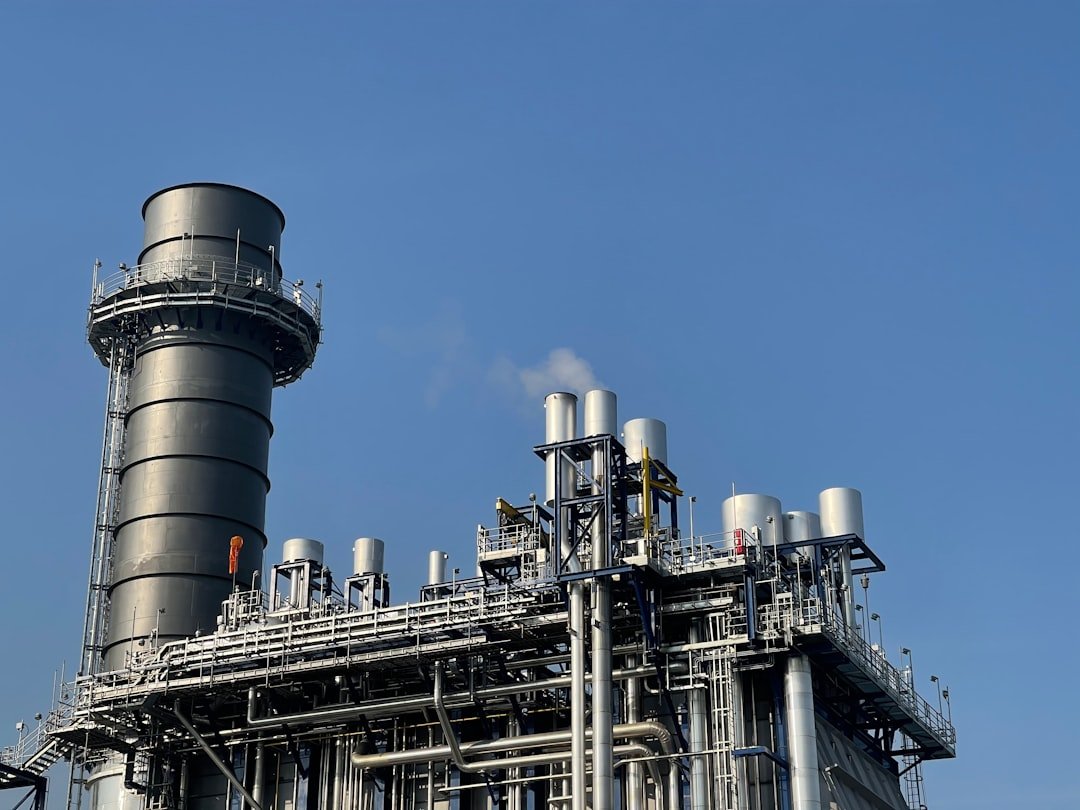Chevron’s Carbon Emissions: A Comprehensive Study Chevron Corporation, one of the biggest global energy companies, has long been a major force in the oil and gas sector. Chevron operates on multiple continents, and its operations have a significant impact on the sustainability of the environment and the world’s energy supply. Environmentalists, legislators, and the general public have all expressed serious concern about the company’s carbon emissions, which are mostly the consequence of its extraction, refinement, and distribution operations. It is more important than ever to comprehend Chevron’s carbon footprint as the globe struggles with the pressing need to address climate change. Chevron’s carbon emissions are a global issue, not just a corporate one, due to the size of its operations.
Key Takeaways
- Chevron is a major contributor to global carbon emissions, with a significant impact on the environment and public health.
- The company has made efforts to reduce its carbon emissions through various initiatives and investments in renewable energy.
- Government regulations play a crucial role in addressing Chevron’s carbon emissions, but corporate social responsibility is also important in driving emission reduction.
- Chevron’s investments in renewable energy demonstrate a commitment to transitioning towards a more sustainable and low-carbon future.
- The future of Chevron’s carbon emissions presents both challenges and opportunities, with the potential for further innovation and collaboration in addressing climate change.
One of the main causes of climate change, greenhouse gas emissions, are attributed to the company. The purpose of this article is to investigate the various effects that Chevron’s carbon emissions have on the environment and public health, look at the company’s initiatives to reduce these emissions, and talk about the wider ramifications of corporate responsibility and governmental regulations in this regard. The effects of Chevron’s carbon emissions on the environment are extensive.
Extreme weather events, melting ice caps, and rising temperatures are all results of global warming caused by these emissions. Climate change-related environmental deterioration threatens ecosystems that are essential to human survival as well as biodiversity. Localized environmental problems like habitat destruction, water contamination, and oil spills can also result from Chevron’s operations.
For example, oil spills have the potential to destroy marine life and upend local economies that rely on tourism and fishing. Drilling & fracking are common extraction methods in delicate areas, which can lead to biodiversity loss and soil erosion. As a result, Chevron’s carbon emissions have an ecological impact that goes beyond just numbers; it includes a complex web of effects on both human communities and natural habitats. The environmental effects of Chevron’s carbon emissions also affect public health. Air pollution from burning fossil fuels is associated with a number of health problems, such as heart problems, respiratory disorders, and even early mortality.
| Year | Carbon Emissions (million metric tons) | Impact | Solutions |
|---|---|---|---|
| 2015 | 122 | Contributed to climate change and air pollution | Investing in renewable energy, carbon capture and storage |
| 2016 | 120 | Continued impact on climate and environment | Reducing methane emissions, improving energy efficiency |
| 2017 | 118 | Efforts to reduce emissions showing some progress | Expanding low-carbon businesses, setting emission reduction targets |
Asthma & other chronic illnesses are more common in communities close to Chevron’s refineries or drilling sites because of exposure to dangerous pollutants. Also, tainted water supplies & decreased food security may result from Chevron’s operations’ damages to the environment. Fracking-related hazardous chemicals, for example, have the potential to leak into groundwater and endanger the health of nearby residents. The cumulative effect of these health risks emphasizes how urgently businesses like Chevron must accept accountability for their emissions & wider effects on public health. As worries about climate change and environmental damage have grown, Chevron has launched a number of initiatives to cut its carbon emissions. In order to reduce the intensity of its greenhouse gas emissions across all of its operations, the company has set specific goals.
These objectives are a component of a larger plan to show corporate responsibility & conform to global climate goals. Also, Chevron has made technological investments to increase operational energy efficiency. The company intends to reduce its emissions while carrying on with its primary business operations by implementing cutting-edge technologies like carbon capture and storage (CCS).
On the other hand, detractors contend that although these efforts are positive, they might not be enough in light of Chevron’s overall emissions. Implementation of these initiatives and the organization’s dedication to openness in reporting progress will ultimately determine how successful they are. Understanding that a shift to sustainable energy sources is necessary, Chevron has started funding renewable energy initiatives.
These expenditures represent a change in approach as Chevron looks to lessen its dependency on fossil fuels and diversify its energy portfolio.
The magnitude of these expenditures, however, calls into question their efficacy and sincerity. Despite its advancements in renewable energy, Chevron continues to make significant investments in oil and gas exploration, according to critics. This two-pronged strategy could be interpreted as an effort to preserve profitability while resolving climate change-related PR issues.
Chevron faces a challenge in striking a balance between its traditional business model and a sincere dedication to sustainable energy solutions. Government laws are very important in determining how businesses behave when it comes to carbon emissions. Regulations are being created or reinforced in many nations to make businesses answerable for their environmental effects.
These laws may include mandatory reporting requirements, carbon pricing schemes, and emissions caps that force corporations such as Chevron to reveal their carbon footprint. Chevron must abide by these rules in order to keep its operating license from the government & for legal reasons. Customers and investors are putting more pressure on businesses to implement more sustainable practices as public awareness of climate change rises. By rewarding investments in greener technologies & punishing excessive emissions, government regulations can act as a catalyst for change within businesses. Nowadays, corporate social responsibility, or CSR, is a crucial component of business operations, especially for firms in environmentally delicate sectors like the oil & gas industry. Adopting CSR entails Chevron admitting its part in climate change and acting proactively to lessen its effects.
This entails lowering carbon emissions as well as interacting with stakeholders, including investors, environmental groups, & local communities, to promote accountability and transparency. By giving CSR projects top priority, Chevron can improve its standing and gain the confidence of stakeholders who are growing more concerned about environmental issues. A strong CSR plan can also result in long-term financial gains by drawing in socially conscious investors and clients who favor businesses that practice sustainability. In the end, Chevron’s future survival in a market that is becoming more environmentally conscious may depend on incorporating CSR into its main business plan.
Looking ahead, Chevron’s carbon emissions present both opportunities and challenges. As traditional fossil fuel companies navigate changing market dynamics & regulatory landscapes, the global push towards decarbonization poses significant challenges. As nations enforce more stringent climate regulations and consumers seek cleaner energy alternatives, Chevron needs to modify its business strategy to avoid becoming obsolete.
But there are also chances for development & innovation as a result of this shift. Through investments in renewable energy technologies & improved operational efficiency, Chevron can establish itself as a frontrunner in the rapidly changing energy world. The business could embrace sustainable practices that support international climate goals while utilizing its experience in energy production. To sum up, even though Chevron’s carbon emissions present serious risks to the environment and public health, the business has the chance to revolutionize its operations by implementing innovative and ethical practices. Chevron can significantly influence the development of a more sustainable energy sector in the future by pledging to make significant emissions reductions and investing in renewable energy sources.
Chevron has been under scrutiny for its carbon emissions, with many calling for the company to reduce its environmental impact. In a related article on greenhouse emissions sources and impact, it discusses the importance of understanding where emissions come from and the effects they have on the environment. This article provides valuable insights into the role companies like Chevron play in contributing to climate change and the steps that can be taken to address these issues. To learn more about greenhouse emissions and their impact, check out the article here.



